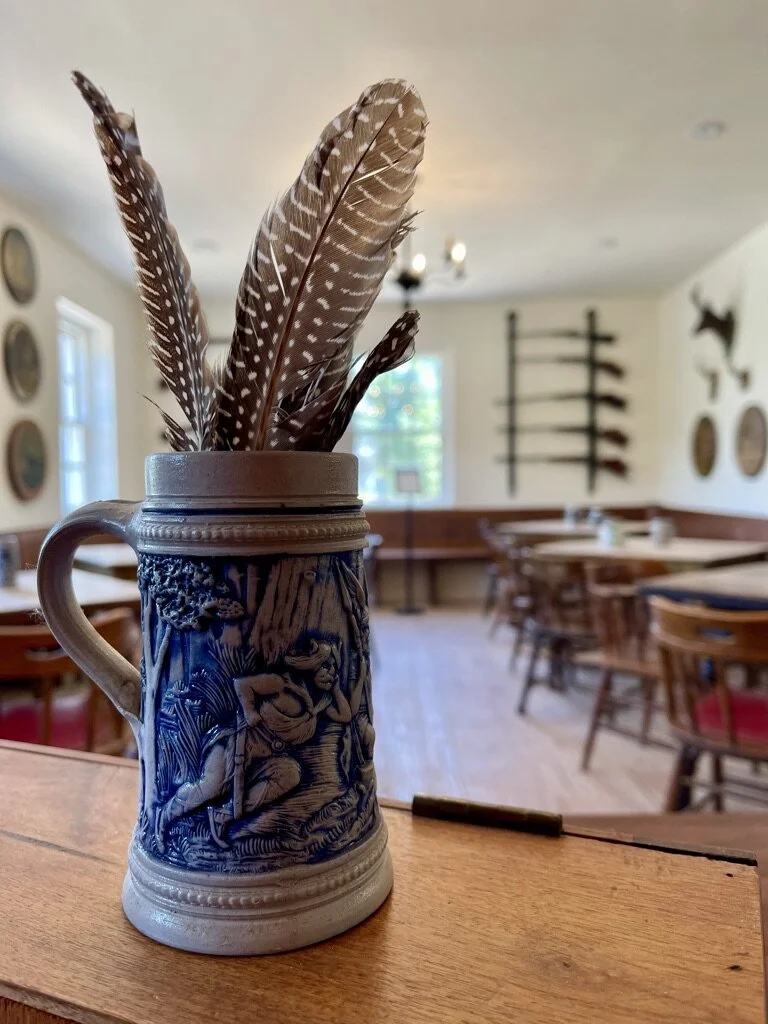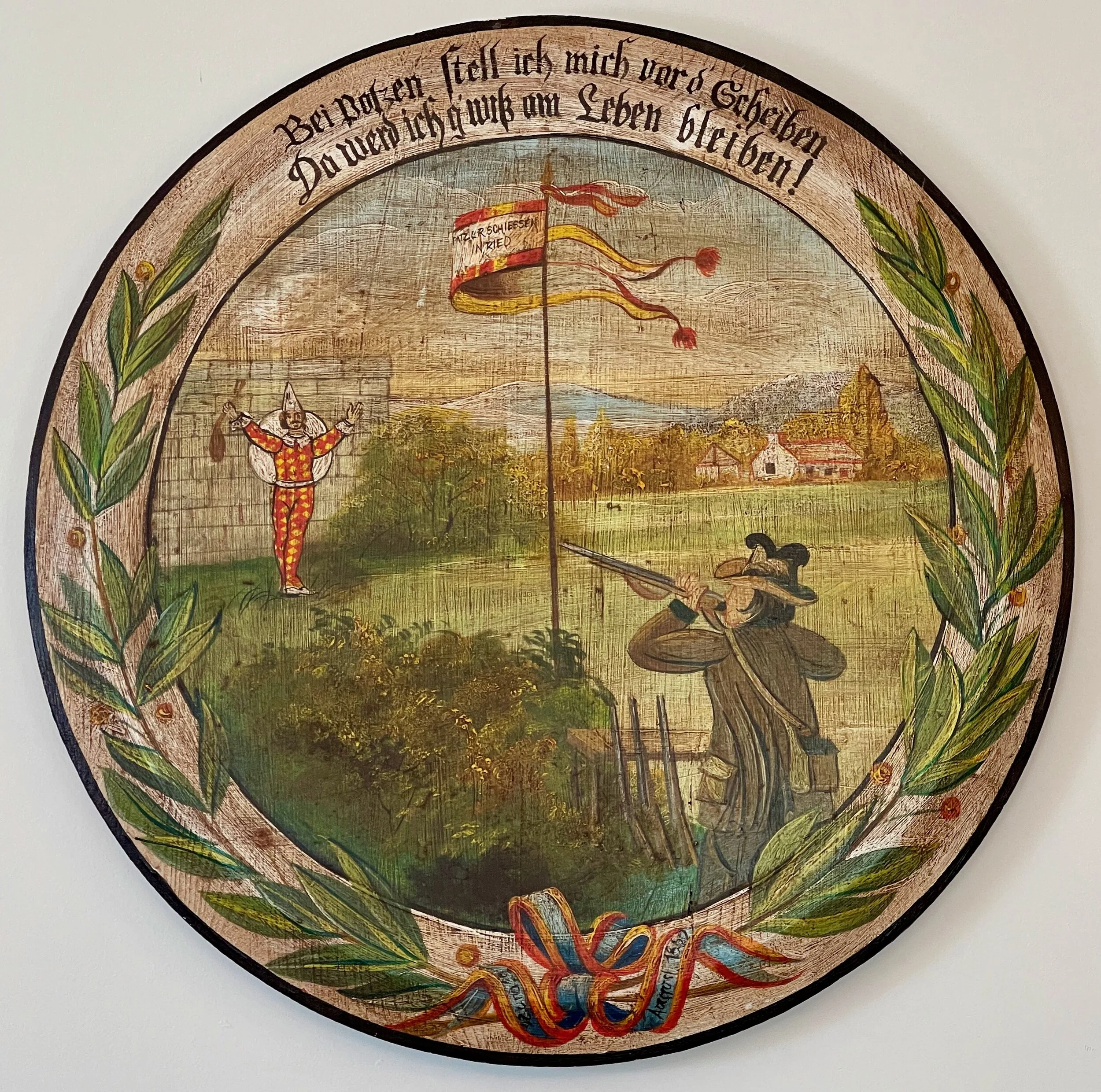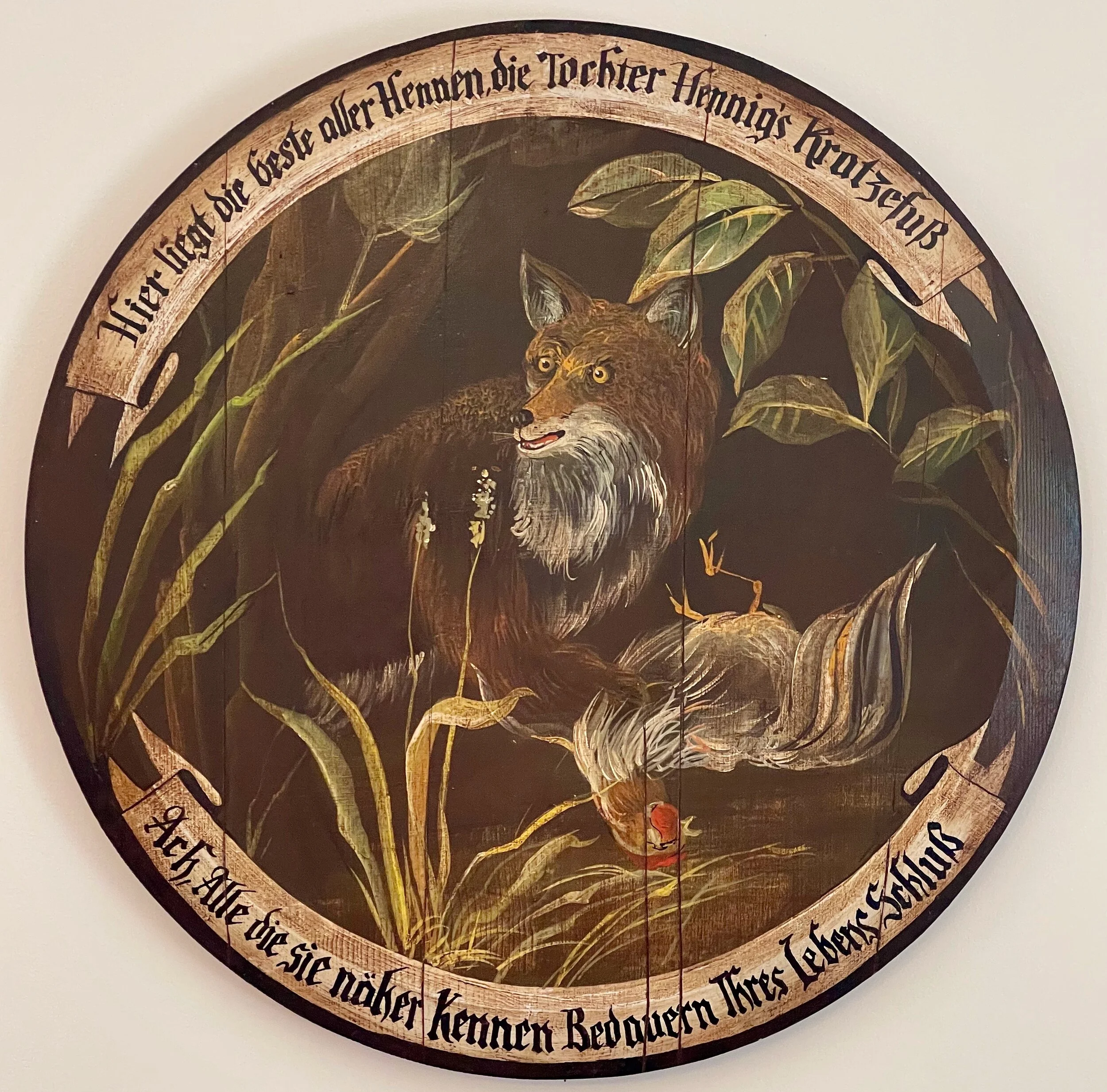Schützenhalle
What we now call the Schützenhalle was built by a day-laborer named George Fries between 1851 and 1853. It originally served simply as a family home, and the interior has been renovated to resemble a scaled-down German Schützenhalle, a building in which sport shooters would gather to eat, drink and commiserate after a match. The facade of the building sports the same red brick of which it was originally built, brick being a popular building material in Hermann thanks to the clay-rich soil of the Missouri River region.
Scharfschießen (sharp shooting) was a popular sport in Germany going all the way back to the 14th century, when the first Schützenfeste, a festival meant to celebrate the citizens’ defense of their towns, was held. The verb schützen does not actually mean “to shoot” (schießen) but rather “to protect” or “defend,” although the noun Schützen does translate to “shooters.” The first festivals were crossbow competitions in which the competitors shot at a bird model called a popinjay. By the 1500s, Scheiben, or round targets, had replaced the popinjay. Guns had replaced crossbows by the turn of the 17th century. Later in that century, it became common practice to bring a decorative Ehrenscheibe, or “honor target,” as a prize for the winner, who was dubbed Schützenkönig (champion marksmen, literally “shooter king”). These targets were painted according to the wishes of the previous Schützenkönig, and they were inscribed with poetry or phrases accompanying the images, as well as the date and place of the contest and the names of the winner and the target’s donor. On the walls of this room are many colorful examples of these Ehrenscheiben.
Within 10 years of settlement, the sharpshooters that immigrated to Hermann had organized into a volunteer militia called the Hermann Jaeger Verein. Another company soon formed, and they later combined to become the Hermann Jaeger Battalion. Die Deutsche Tribuene reported on August 3, 1847, that the Battalion was very involved in music for public events, and that pastimes available through membership included horseback riding, skittles (a historical lawn game, not a brightly colored candy) and target shooting.
During the Mexican-American War, the Battalion was renamed to the Herrmann Santa Fe Battalion, numbering 100 men and equipped with a full band. They were still active after the war, though in 1859 their numbers dropped to 45. Then, in 1872, the sharpshooters of the town officially organized into the Hermann Scharfschützen Verein — the Hermann Sharpshooters Society. Formed not only to practice the sport of target shooting but also for the purpose of socializing, matches were often followed by festive balls which were written about in local papers. In addition to the balls, the Verein hosted spring and fall festivals, where members competed in shooting contests and winners were announced in different categories. During the 1885 fall festival, for example, winners were announced in four categories: off-hand, target-rest, target and extra target. The Verein continued to be active through the 1930s.
Translations of Prize Targets from Hochdeutsch
There are a number of antique prize targets on display in the Schützenhalle — here are just a few which were translated by Lindsey Merritt, our research intern in the summer of 2021.
“Bei (Dotzen?) stell ich mich vor d’ Scheiben / Da werd ich g’wiß am Leben bleiben”
I place myself before the target / There I will certainly stay alive.
“Hier liegt die beste aller Hennen, die Tochter Hennig’s Kratzefuß / Ach, alle die sie näher kennen Bedauern Ihres Lebens Schluß”
Here lies the best of all hens, the daughter of Hennig’s Kratzefuß / Oh, all that knew her well are sorry for her death



